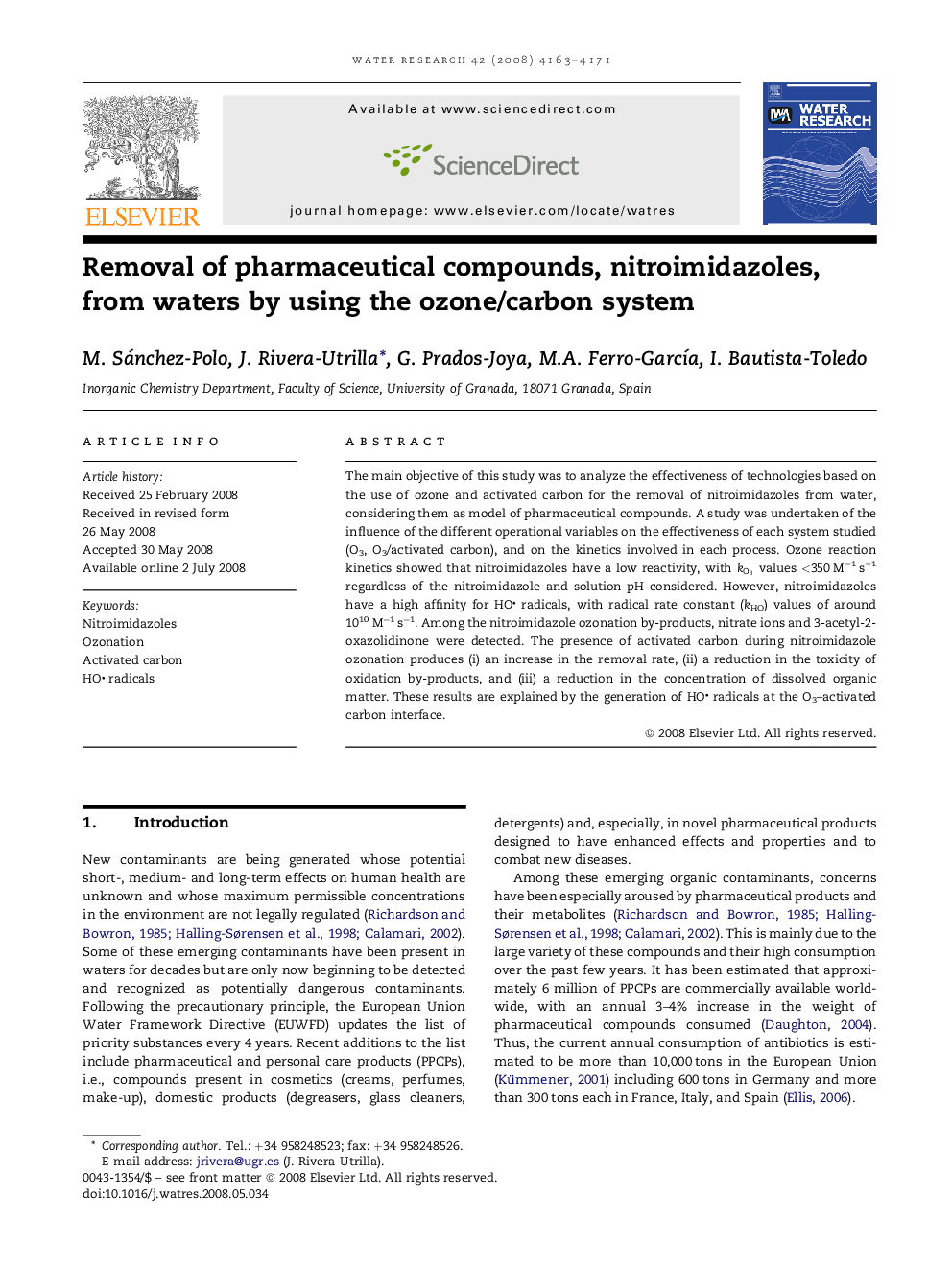| Article ID | Journal | Published Year | Pages | File Type |
|---|---|---|---|---|
| 4484814 | Water Research | 2008 | 9 Pages |
The main objective of this study was to analyze the effectiveness of technologies based on the use of ozone and activated carbon for the removal of nitroimidazoles from water, considering them as model of pharmaceutical compounds. A study was undertaken of the influence of the different operational variables on the effectiveness of each system studied (O3, O3/activated carbon), and on the kinetics involved in each process. Ozone reaction kinetics showed that nitroimidazoles have a low reactivity, with kO3kO3 values <350 M−1 s−1 regardless of the nitroimidazole and solution pH considered. However, nitroimidazoles have a high affinity for HO radicals, with radical rate constant (kHO) values of around 1010 M−1 s−1. Among the nitroimidazole ozonation by-products, nitrate ions and 3-acetyl-2-oxazolidinone were detected. The presence of activated carbon during nitroimidazole ozonation produces (i) an increase in the removal rate, (ii) a reduction in the toxicity of oxidation by-products, and (iii) a reduction in the concentration of dissolved organic matter. These results are explained by the generation of HO radicals at the O3–activated carbon interface.
